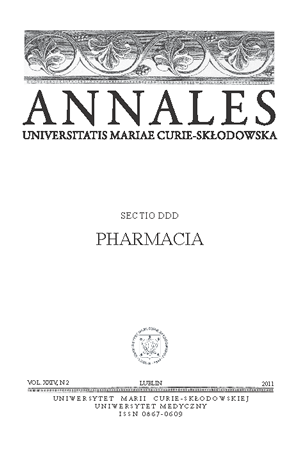Hard dental tissues mineralization disorders – case study
Keywords:
tooth mineralization, tooth developmental disturbances, vitamin D deficiencyAbstract
Vitamin D deficiency causes changes in bone tissue including hard dental tissue. Deficiency of vitamin D, which is necessary for correct bone and hard dental tissues mineralization, may be the result of insufficient amount of dietary vitamin D, vitamin D absorption disorder or resistance to active form of vitamin D. A female patient aged 12 years and 1.5 months attended the Chair and Department of Paedodontics Medical University of Lublin. Intraoral examination showed the occurrence of white and dark brown spots, pits and fissures of the enamel surface as well as changes in teeth shape. The planned treatment is the application of varnishes including fluoride compounds and, after the completion of developmental period, prosthetic treatment.
References
1. Brook A.H., Fearne J.M., Smith J.M.: Environmental causes of enamel defects. Ciba Found Symp., 205, 212 1997.
2. Clarcson J.J., O'Mullane D.M.: A modified DDE index for use in epidemiological studies of enamel defects. J. Dent. Res., 68, 445, 1989.
3. Kmieć Z. (2007). Histologia i cytofizjologia zęba i jamy ustnej. Wrocław Elsevier Urban & Partner.
4. Shoback D. et al. (2004) Metabolizm składników mineralnych i choroby metaboliczne kości. In: Endokrynologia ogólna i kliniczna. Greenspan FS, Gardner DG (editors), Lewiński A (Polish editor), Wydawnictwo Czelej; p. 296
5. Velló M.A. et al.: Prenatal and neonatal risk factors for the development of enamel defects in low birth weight children. Oral Dis., 16, 257, 2010.
Downloads
Published
Issue
Section
License
Copyright (c) 2011 Authors

This work is licensed under a Creative Commons Attribution-NonCommercial-NoDerivatives 3.0 Unported License.


